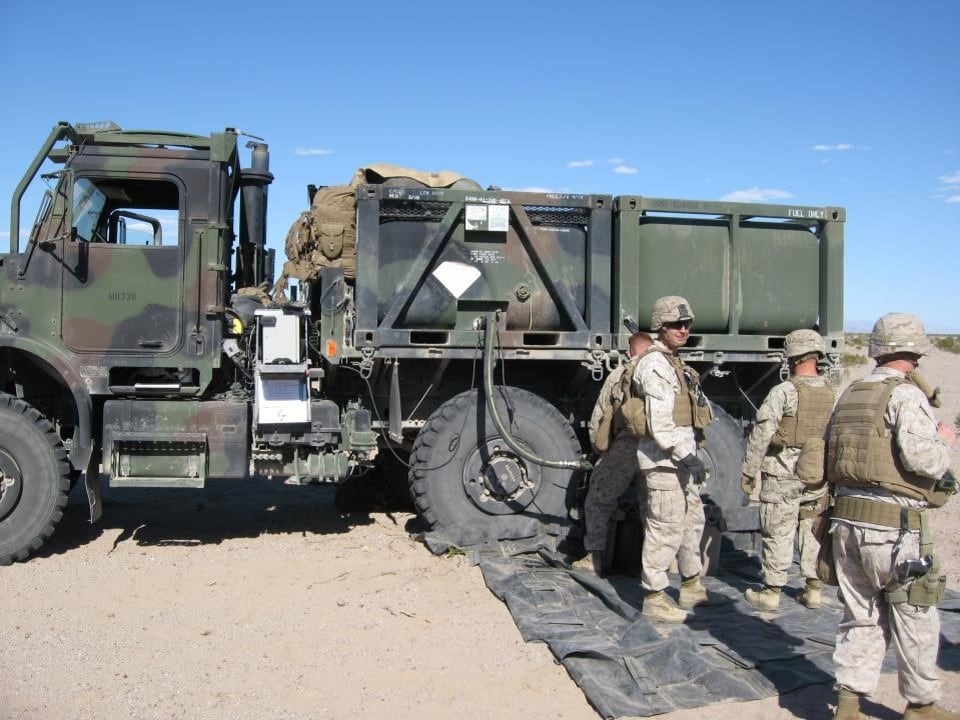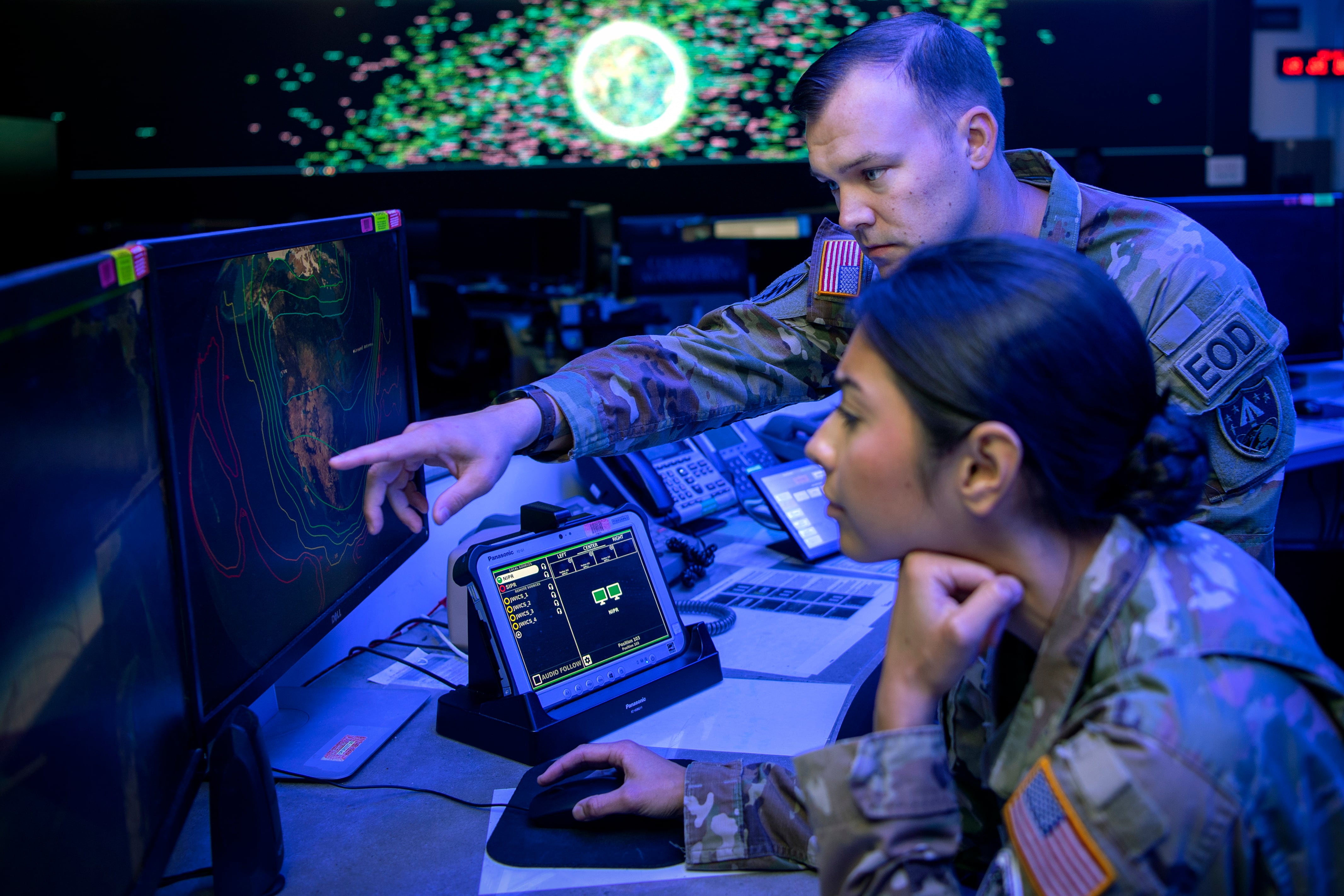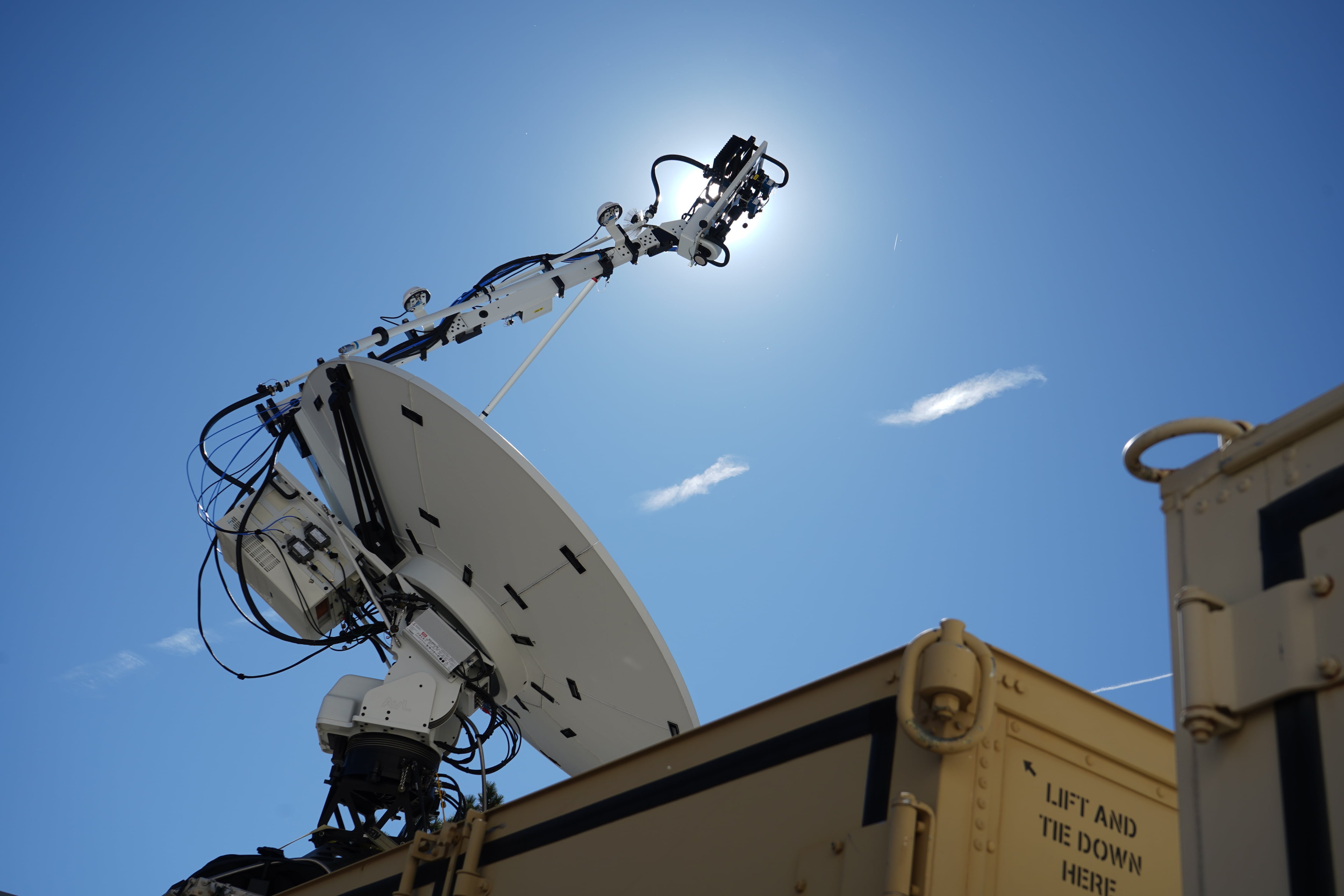The Marine Corps has begun field testing technology that it hopes will give commanders in the field a more timely read on their fuel status.
"Right now the way we collect energy data on the battlefield is in a green log book, with people visually inspecting things, taking measurements with sticks and strings. It's really just approximations," said Maj. Douglas Peterson, project officer for Joint Operational Energy Command and Control at Marine Corps Systems Command.
The new system promises to bring a visual dashboard to bear on the situation, giving Marines transparency into power production and consumption across a range of platforms. It's in field trials with the artillery unit 3rd Battalion, 11th Marines right now, with logistics and air units expected to put the system through its paces as early as this summer.
Fuel use is a critical consideration on the battlefield on land and at sea. Commanders are reluctant to carry more than they need, but wary of running out too soon.
Planners envision an array of sensors attached to generators, tactical vehicles, camp cooling units, bulk fuel storage units and diverse other platforms. These would deliver consumption metrics to help create a data-driven picture of fuel usage.
On a vehicle, for instance, meters could collect information from the on-board computer. "From that you can get how many hours the vehicle has run, how many miles it has driven, how long it has been idling. Then you can get the fuel data, especially how much you've used. From all that raw data you can do analytics, compare it to planning factors and past historical data. Now you start to get a much better idea of what you might need," Peterson said.
As envisioned, all these readings will be recorded and reported in real time. That would be a big step forward from the status quo. "Right now they put it on an email on a daily battle report, so it is not real time," he said. As a result, commanders "tend to send more than what was requested. We don't trust the data, so we send more fuel just to be sure that we have enough."
Beyond just recording the stats on fuel usage, the new system will apply sophisticate algorithms in order to get a more forward-looking view of consumption.
"Right now we can compute the project supply for the day based on past 10 days' historical usage. We'd like to work toward extrapolating that to larger forces. If we know how one battalion is doing, we can take that and say: 'OK, this is what the larger MAGTF [Marine air-ground task force] is going to use," Peterson said.

Fuel use is a critical consideration on the battlefield and at sea. Commanders are reluctant to carry more than they need, but wary of running out too soon.
Photo Credit: Christine In/Marine Corps
"It's about aggregating those smaller components of data to provide useful information on a larger scale," he said.
Fuel consumption is an issue for all the services. While the Marine Corps is focusing on expeditionary aspects, the Army is looking at base camp usage.
Last spring, for instance, an integrated exercise at Fort Devens, Massachusetts, looked at ways to increase self-sufficiency of these camps and reduce the number of fuel truck convoys. "It takes a team of teams," Jyuji Hewitt, executive deputy to the commanding general of the Army's Research, Development and Engineering Command, said at the time. "It's really all focused on not only our soldiers, but our joint force."
The exercise included a tactical microgrid architecture as a means to reduce generator fuel usage, as well as a specialized generator designed to reduce fuel consumption by varying the engine speed to match the power load.
Tailored solution
While the Marine Corps used off-the-shelf sensors for the core of the system, developers had to make significant modifications in order deliver the platform battlefield-ready.
"The data collectors are common between us and industry, but passing of data on the communications network it is more challenging. Same with analytics: We don't operate the same way UPS or FedEx does," Peterson said.
In the effort to maximize fuel efficiency and strategize usage, commercial products don't always align with military need. "The commercial side wants to track driver behavior, but they know they can always stop at a gas station," he said. "We are in a more resource-constrained environment. So if we are assigning a unit to take on a mission, we want to know who else is near there and has fuel available. That's not the kind of thing that is interesting to folks on the commercial side."
The new system adjusts those algorithms to meet the Marines' specific demands and then displays the outcomes on an easy-to-read dashboard. "You can zoom out to a large map of the battlefield or drill down into details to see where your fuel assets are, the stages of different units in terms of when they last received fuel," he said. "One dashboard shows all the fuel transactions, what current fuel levels are at the bulk fuel sites. Another tab will show you the actual data being pulled from the vehicles in terms of miles driven and fuel consumed."
The net result should be a higher degree of accuracy in fuel management and more effective fuel usage overall.
"It's fairly common today for a unit to send two tankers for a refuel when they only need one," Peterson said. "We want to use energy better both in terms of saving fuel and increasing the operational reach — how long they can operate at a certain tempo without having to slow down or pause."








